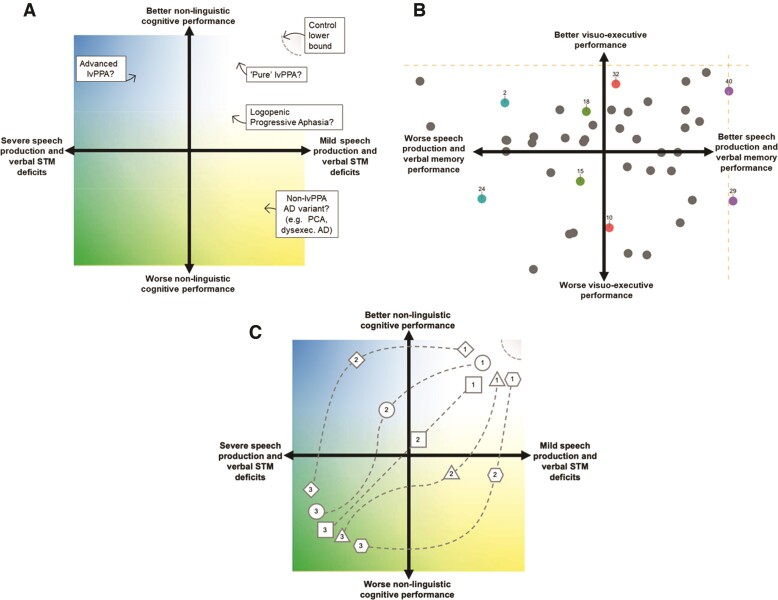Figure 2.
Capturing phenotypic variations in lvPPA within a graded, multidimensional space. (A) Capturing cognitive changes to language and non-linguistic domains within a multidimensional space allows an examination of the graded, individual-level variations in patients’ profiles, as well as the underlying neural machinery that is affected in each case. STM = short-term memory; PCA = posterior cortical atrophy; AD = Alzheimer’s disease. (B) The nature of such a multidimensional graded space including the lvPPA phenotype receives support from the empirical findings of Ramanan et al.106 Here, principal component analysis on comprehensive neuropsychological performance data (n = 43 lvPPA) revealed multiple, independent sources of variation, captured best by two orthogonal dimensions of performance labelled ‘speech production and verbal memory’ and ‘visuospatial and executive’ (visuo-executive) performances. The finding that lvPPA patients, irrespective of the extent of their speech production and verbal memory performance, display some level of visuo-executive changes (c.f. coloured pairs) suggests individual-level variation in cognitive phenotype that necessitates the use of a multidimensional space. Here, dashed gold lines indicate lower bound of performance in healthy Controls (adapted from Ramanan et al.106). (C) The adoption of a multidimensional space to account for linguistic and non-linguistic changes in lvPPA can further afford mapping of heterogeneous disease trajectories dynamically varying at the individual-level. This includes individuals showing generalized cognitive impairment that are (i) linear with disease progression (square); (ii) emerge quickly into disease onset (triangle and pentagon); or (iii) emerge slowly with disease advancement (diamond and circle). Here, numbers correspond to the clinical assessment round (1 = 1st assessment etc.). STM = short term memory.

